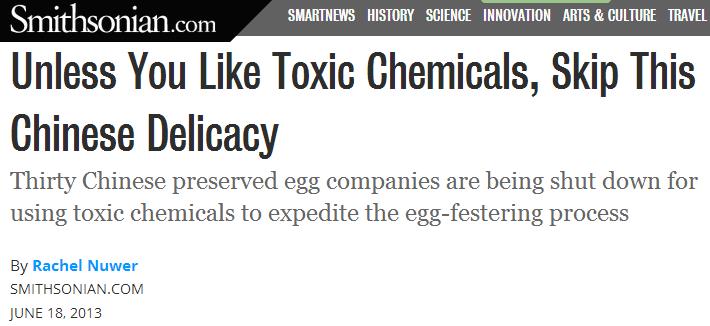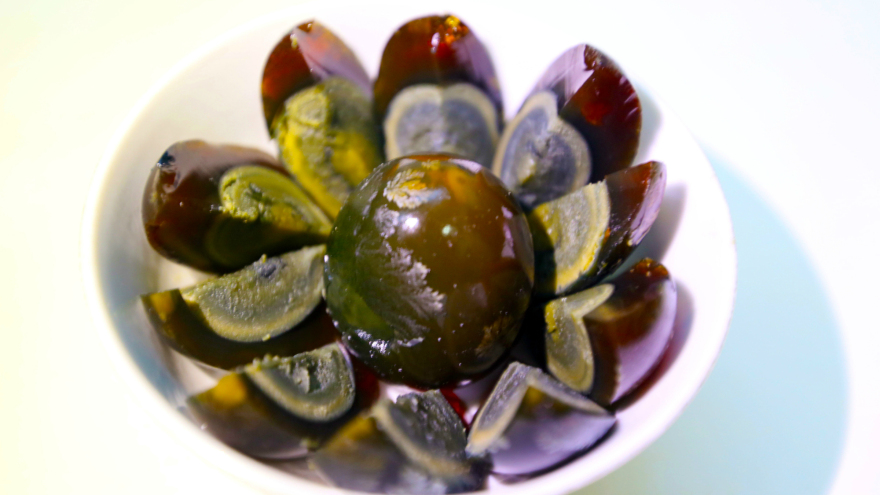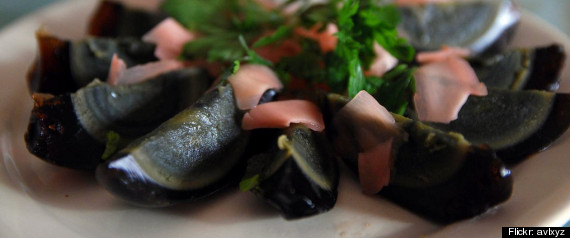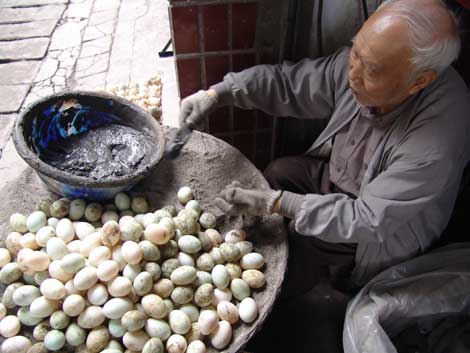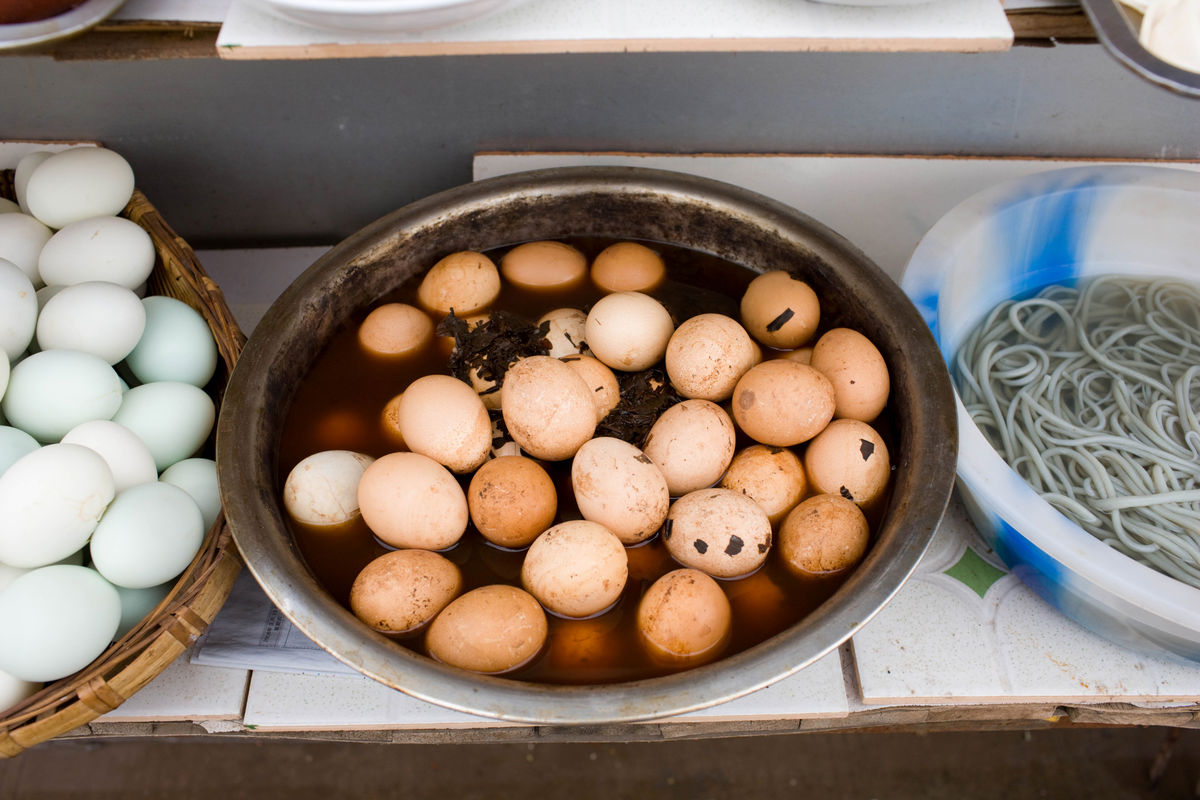[FACT OR FAKE #58] Do Century Eggs Contain Toxic Chemicals?
Thirty companies producing preserved eggs in Nanchang county had been closed by authorities for using toxic copper sulphate rather than baking soda to speed up the maturing process.
Recently, a Smithsonian article regarding toxic chemicals used in century eggs started doing rounds on social media. The article is from June last year.
It talks about how these eggs look like they have been sitting around for years and years and why even the Chinese consumers have a reason to avoid these eggs
"While their putrid-looking greenish-grey yolk and transparent, brown egg white may appear to be the furthest thing from appetizing to Western palettes, for the Chinese, these things are a common delicacy. But now, even Chinese consumers have a reason to avoid 1,000-year-old eggs. Thirty preserved egg companies are being shut down for using industrial copper sulphate, a toxic chemical, to expedite the egg-festering process."
The article quotes a report from South China Morning Post that mentions authorities shut 30 companies for using toxic copper sulphate rather than baking soda to speed up the maturing process:
"Industrial copper sulphate usually contains high levels of toxic heavy metals, including arsenic, lead and cadmium, so is banned for use as a food additive. The eggs are usually preserved with baking soda, salt, and quicklime for about two months. The process turns yolks dark green and the egg white into a stiff, dark jelly. Using copper sulphate could significantly reduce the processing time while achieving the same effect."
It further mentions how the companies — one of which produces 300,000 tons of preserved eggs per year — are on hiatus as investigations continue
One official remarked that nearly all the preserved egg companies used this chemical, and he doesn't consider it such a big deal. "There won’t be a problem if you don’t eat too many of them," he told South China Morning Post.
Are preserved eggs — or as they are normally called century eggs — really toxic? How much of all this is FACT or FAKE?
Before we get to the FACT OR FAKE analysis, let's find out (for the uninitiated) what really are century eggs and the origin behind them?
Traditional methods are still used, but modern methods, simplified, are now more common
Image via chinadaily.com.cnCentury eggs are preserved eggs. They are also referred to as thousand-year eggs or millennium eggs, but are not preserved for a millennium, one thousand years, or even a century. Duck, quail or chicken eggs can be used. The solution usually consists of clay and salt, but can also include ash, quicklime and rice hulls. It causes the yolk of the eggs to take on a creamy, cheese-like texture, and transforms the whites into a dark-colored jelly.
Century eggs have many names, including the aforementioned few. In China, they are sometimes referred to as "pine-patterned eggs." This is due to the intricate, woodland-looking patterns that show up near the eggs' surface. The Thai name, khai yiao ma, translates as "horse urine eggs." This is rooted in the misconception that the eggs are made by soaking in horse urine -- a belief that is held due to their pungent odor.
According to legend, these eggs have existed for centuries, with their accidental discovery dating back to the Ming Dynasty in China. A resident of the Hunan province supposedly discovered duck eggs left in a pool or slaked lime and decided to try them.
chinadaily.com.cnLast year, China ordered a nationwide inspections of preserved-egg plants after media reports that toxic chemicals were being used as additives
Local governments were told to check all preserved-egg factories and products to “strictly examine” whether industrial copper sulphate additives are being illegally used, state-run Xinhua News Agency reported, citing the China Food and Drug Administration. Plants found using the chemical will be shut down and tainted eggs should be removed from markets.
FACT: Given the modern understanding of the chemistry behind the formation of century eggs, they may not be completely toxic-free
For instance, soaking the eggs in a brine of salt, calcium hydroxide, and sodium carbonate for 10 days followed by several weeks of aging while wrapped in plastic is said to achieve the same effect as the traditional method. This is because egg-curing in both the new and traditional methods is accomplished by introducing hydroxide ions and sodium into the egg. The poisonous compound lead(II) oxide increases the curing speed of century eggs, which has led to some unscrupulous producers in the past adding it to their curing mixtures.
However, zinc oxide is now used as a safer alternative. Although zinc is an essential micronutrient, excessive zinc consumption can lead to copper deficiency, so the zinc content needs to be checked for safety.
While there are no new reports on the 30 plants that were shut last year for using industrial copper sulphate, here's what you should know
Industrial copper sulphate, which contains arsenic, lead and cadmium, may cause kidney damage. Nanchang county produces 300,000 tons of eggs each year, making up 15% of China’s total.
bloomberg.comWe at SAYS encourage you to verify information before you forward stories that are fake or seem suspicious. Here are some other FACT OR FAKE related stories:
PS: We debunk fake stuff every Sunday. You can help us keep the Internet slightly fake-free by sending us what you think is fake/hoax. E-mail [email protected]
